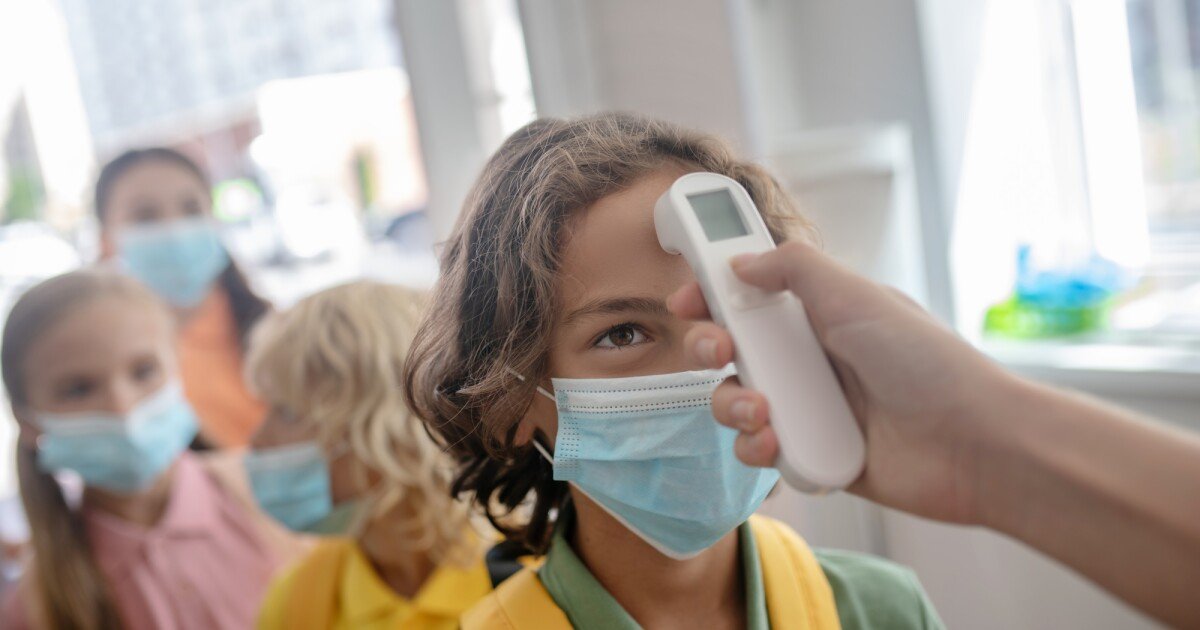CDC report suggests COVID increases risk of diabetes in children – New Atlas
A new report from the US Centers for Disease Control and Prevention (CDC) has found children who have recovered from a COVID-19 infection are more likely to develop diabetes than those with no history of the viral infection. The preliminary findings are observational and the researchers call for more study into the association between COVID-19 and diabetes.
The new CDC study looked at data from two large US health insurance claim databases. Spanning a period from March 2020 to June 2021, the researchers looked at the rates of new diabetes diagnoses in those under the age of 18, comparing those who experienced a COVID-19 infection and those who did not.
In the largest database, encompassing health records from over 1.5 million children, the researchers found new diabetes diagnoses were 166 percent more likely in patients following COVID-19 infection compared to those with no history of COVID-19. A second dataset, covering just under 900,000 patient records, saw a much lower increase of just 30 percent in diabetes diagnoses following COVID-19.
A number of researchers not working on this new report quickly pointed out the limitations in this study’s findings. Walid Gellad, from the University of Pittsburgh, said he would not put too much stock in the report’s findings as there is no accounting for other factors that could explain the higher rates of diabetes in the COVID cohort.
For example, Gellad points out, there is no measure of obesity rates in the young populations, which is a known major pre-existing factor that can increase a child’s risk of developing diabetes. Plus, the report does not distinguish between type 1 and type 2 diabetes, instead rolling them into one homogenous cohort.
The CDC researchers do note these limitations in the report and indicate the findings warrant further long-term studies on the subject. In the short term the researchers say doctors should screen children for diabetes in the months following COVID-19.
“Public health messages highlighting the risks associated with COVID-19 among the pediatric population are especially important to inform clinicians and parents about possible sequelae of COVID-19,” the researchers write. “Partner agencies and clinicians in the field should be aware of long-term consequences and monitor persons aged <18 years in the months following a SARS-CoV-2 infection for new diabetes onset.”
This is certainly not the first time researchers have detected an association between COVID-19 and diabetes. Early in the pandemic a growing number of anecdotal reports linking new-onset diabetes diagnoses to COVID-19 infection led a team of researchers to establish the CoviDIAB project, an international registry tracking the prevalence of diabetes diagnoses following COVID-19.
While it may take time to understand whether there is a direct causal connection between COVID-19 and diabetes risk, a number of mechanisms have been hypothesized to explain how SARS-CoV-2 infection could trigger the onset of diabetes.
“COVID-19 might lead to diabetes through direct attack of pancreatic cells expressing angiotensin converting enzyme 2 receptors, through stress hyperglycemia resulting from the cytokine storm and alterations in glucose metabolism caused by infection, or through precipitation of prediabetes to diabetes,” the CDC researchers write in the new report. “A percentage of these new diabetes cases likely occurred in persons with prediabetes, which occurs in one in five adolescents in the United States.”
That last hypothesis suggests an increase in diabetes diagnoses following COVID-19 could simply be clinicians catching the disease earlier in people already experiencing prediabetes. This particular hypothesis is currently being explored by those behind the CoviDIAB project, who are tracking the progression of post-COVID diabetes cases to understand whether the disease dissipates in the months and years following viral infection.
“If diabetes remits, do patients remain at higher risk of future diabetes or DKA [diabetic keto-acidosis]?” the CoviDIAB researchers ask on their website. “Does this phenomenon represent abrupt onset of classical type 1 and type 2 diabetes or a new type of diabetes? Answering these questions is a priority of vital importance to inform the immediate clinical management, follow-up and monitoring of those affected.”
The new CDC report does note its data covered a period in the pandemic before vaccines were available to those under the age of 18. It is unclear whether the severity of COVID-19 influences the subsequent diabetes risk and to what degree vaccination reduces diabetes risk. However, the uncertainty in the data at the moment does lead the CDC researchers to ultimately recommend vaccination and infection prevention strategies in children to reduce any potential increase to diabetes risk.
“These findings underscore the importance of COVID-19 prevention among all age groups, including vaccination for all eligible children and adolescents, and chronic disease prevention and treatment,” the report concludes.
Source: CDC



